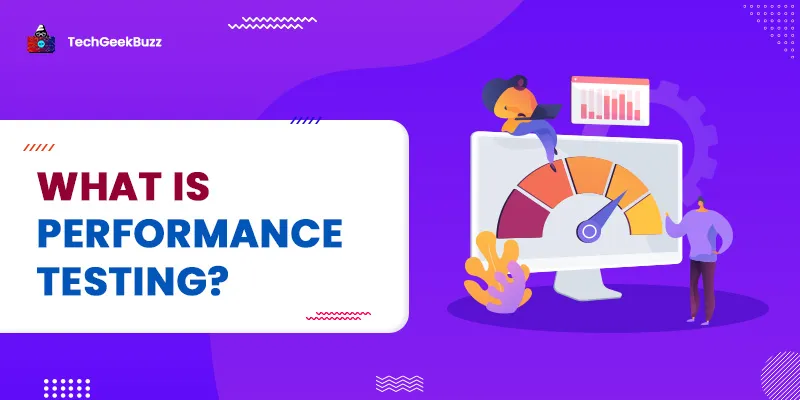Technologies and machines are entirely dominating the world in the present time because they are controlling almost all techniques and powering them. In this modern scenario, it offers the solution for all types of machines working to favor our needs. Therefore testing is an essential part of modern technology, so let's take a brief introduction to how testing works and what software testing is.
What is Software Testing?
It is the process to evaluate the procedure and functions of a software application to find unspecified software bugs. It identifies that the developed software is compatible with its parameters and its requirements of it. It identifies the defects to ensure the quality of the product. In other words, it is a technique to execute a system to identify any error or any missing requirements in the software.
Let's discuss some aspects of the software testing process, and they are:
- It meets the technical and business needs, which are guided by development and design.
- Meets the technical and business requirements that conducted its development and design.
- It can be performed with equal characteristics
- Works as per the specification
Now let’s discuss some more critical Stages that can clarify the importance of testing.
Software Testing Life Cycle (STLC)
STLC is a chain of various activities performed by the testing team to ensure the quality of the software /product. It defines a sequence of events conducted to make Software Testing. Apart from this process also recognizes the requirements of test activities for accomplishing the test activities. In the process, all activity is provided in a planned and systematic way. A software testing life cycle includes five significant Stages, and they are:
- Requirement Analysis
- Test Planning
- Test Case Development
- Test Environment Setup
- Test Execution
- Test Cycle Closure
1. Requirement Analysis
It is the very first step that is involved in the STLC. The Quality Assurance (QA) team gets the necessity so that they can find the terms and conditions regarding the resting requirements.
2. Test Planning
It is the most crucial phase of the STLC in which each testing strategy is determined. This Stage is also known as the Test Strategy phase. This Stage involves a test Manager to determine the cost and effort measures for the entire project. It represents the objectives of the project.
3. Test Case Development
This process begins after the successful test planning in previous Stages. In this stage of STLC, test teams note down the details of the test case. Most importantly, the testing team also creates test data for testing purposes. Test cases will be reviewed by the QA lead after preparing the test data successfully.
4. Test Environment Setup
Setting up the test conditions is essential to the Software Testing Life Cycle. A testing condition is a set of both hardware and software for the testing teams to execute test cases. It boosts test performance with network configuration, hardware, and software.
5. Test Execution
The next stage of the STLC helps execute all codes and compare the actual and expected results in the software testing. When the test execution starts, a test analyst starts running the test scripts, which are based on the test strategy provided in the project.
6. Test Cycle Closure
The last stage of the STLC is Test Cycle Closure. It includes calling out the testing team member meeting & estimating cycle finish criteria based on Test coverage, Cost, Time, Quality, Important Business Purposes, and Software.
Why do we want Testing in the modern era?
The success of software testing can easily control the growth of the business because it plays a vital role in the improvement of software products and their application. Therefore let's discuss the reasons that prove that software testing is essential:
1. Cost-Effective
It is the most common and essential benefit at the same time because project testing can easily save your money in the long term. The software development process holds various stages because it can stage all bugs and glitches, and it costs very less to fix the issues.
2. Security
Security is the most crucial, vulnerable, and sensitive part of software testing because a user always looks for trusted techniques. Software testing helps to remove all bugs and risks from the software to improve security in a more improved manner.
3. Product Quality
Software testing helps to create product goals into reality. It is crucial to work as planned in the initial stage. It is essential to follow all requirements of the product because it is beneficial for the user to get the desired results. Software testing can help you to get the best product quality in the final results.
4. Customer Satisfaction
The ultimate goal of technology is to satisfy the needs of the customer, so it is essential for software to be tested to bring an excellent user experience. Software testing helps to provide the best user experience that can help a company for gaining long-term customers.
What are the Principles of Software Testing ?
This is a particularly imaginative and intelligent task for testers to complete. It consists of some principles that play an essential role in the software testing process. Let's discuss the software testing principles in brief:
1. It can assist in identifying bugs
Testing each software or project can help in exposing some defects that may or may not be recognized by developers.
2. Testing with effectiveness is tricky
You cannot achieve the best results without having an appropriate amount of testing process.
3. Early testing
The first you will start to test your project or software, the higher you will get to appropriate your current time.
4. Defect in clustering
At the testing time, you can understand that the bulk of the mistakes or bugs reported is due to the tiny number of modules inside your systems and software.
5. Software testing method is context-dependent
Different techniques, plans, and types of testing are there, which define the variety and features of the application.
Different Types of Software Testing
Testing is an essential part of any substantial software project. It depends on many stages, budgets, timelines, and expertise, including project specifications and suitability. This is a vast domain, but it can be broadly defined into two parts, such as:
1. Manual Testing
This type of testing requires being performed manually, which means testers need to execute the test cases without using any automatic tool manually. It indicates the application is examined manually by QA testers. This type of testing is required to be performed on a manual basis in every environment by using various datasets and the failure or success rate of every proceeding must be recorded.
Manual testing needs experience, knowledge, analytical/logical skills, intuition, and creativity. So, let’s see several manual testing tools below:
- Bugzilla
- Trac
- Jira
- Stryka
- Mantis
- Fogbugz
- Redmine
- Lighthouse
2. Automated Testing
It is a simple and automatic technique in which the tester has to write various scripts on own and use a suitable testing tool to test the software. It is an automated version of manual testing similar to regression testing because it is also used for testing any application from the load, stress point of view, and performance.
Automated testing enables you to perform a constant task and regression test without the interference of manual testers. However, all means are performed automatically, but automation needs some manual work to produce original testing scripts. So, let’s see several manuals. Automated testing tools are:
- Selenium
- TestingWhiz
- Ranorex
- Sahi
- Waiter
- WaitiN
- Tosca
- TestSuite
Testing Companies
There are various substantial corporate organizations presenting testing services with other core software development assistance. Let’s see several big companies that provide the services of software testing:
- ScienceSoft
- Capgemini
- Wipro
- Cognizant
- HP
- Infosys
- TCS
- Hexaware
Conclusion
Testing tools are an essential technique in the modern era to reduce bugs and improve the quality of products. Hence this article can help you to gain complete knowledge of software testing with the life cycle, types, and services providers in brief.
We hope we have covered all the essential points of software testing. If we miss something, let us know via the comments section.
People are also reading:



![What is Waterfall Model? [Phases, Pros, & Cons]](/media/new_post_images/Waterfall_Model.webp)

Leave a Comment on this Post